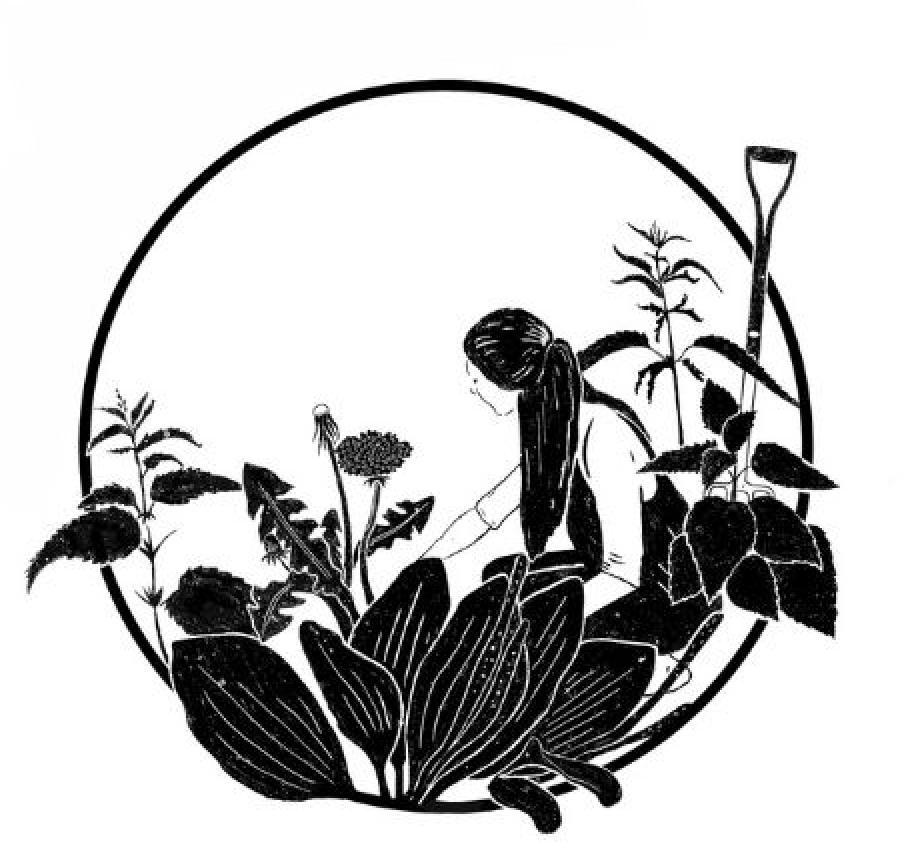July in Ireland is perhaps a little different to other countries, where the heat can dictate the entire day and the sun is high and hot in the sky. As I’m recording this episode a heat wave is predicted for later on this month and personally I cannot wait. The last 4 weeks have been full of dark clouds and heavy showers day after day after day. This isn’t completely unusual for an Irish summer, and I can remember many similar to this year’s, where the sky seemed to be tangibly heavy with continuous grey cloud. As a child I would wish for some kind of celestial rake that could scrap away all the clouds and leave a blazing azure sky.
However even in these moments I try and find the beauty in a cold and wet summer and brave the unseasonal storms by pulling out the winter coats and wellies and getting out of doors despite the foreboding weather.
Now, I do know a lot of you will be listening to this while enjoying more traditional summer temperatures so I will put on my rose tinted spectacles for the sake of my Ode to July and hope and plan for warmer days ahead.
When I think of my ideal July, words such as abundance and spring to mind, and I think of July as that classic month where schools end and work is forced to slow down. Many people take summer holidays and breaks away somewhere exotic and let go of the monotonous motion of the work and school week for a season of light hearted play and exploration.
While I don’t get to go away on holiday much due to the nature of farming and gardening, I do love to lean into the languid nature of the latter two months of summer. On the hotter days I enjoy laying out a picnic blanket, adding a bundle of new books and letting the sun warm me up from head to toe while I escape the country through my literary choices.
The name July came about in the Roman times as a way to honour the birthday of Julius Caesar. While the Anglo Saxons called this time of year Weodmonath meaning the month of weeds as well as Heymonath meaning hay making month. I always cherish finding these details as they absolute fascinate me and in particular the anglo Saxon meanings always are spot on.
The full moon this month falls on the 13th July and is also known as the Buck moon, Thunder Moon or Wort Moon. The buck moon has a clear origin as the buck deer begin to grow their antlers at this time of year, ready for rutting or mating season in autumn. Thunder Moon is likely due to July being commonly full of thunder storms, this year that certainly rings true to me and I have already witnessed quite a few. Wort Moon sounds like something from Halloween but actually refers to the old English word Wyrt which means a herb. You might have noticed, if you’re a keen plantsperson that some wildflowers contain the word wort in their common or folk name, for example bruise wort is another name for daisy and wound wort is the sometimes used to describe yarrow. The inclusion of wort in a plants folk name meant that plant contained notable medicinal qualities. The reason for Julys full moon being called after a herb, is due to the fact that many herbs would be good to harvest now. And the full moon of July would have been a reminder for people to gather and dry herbs for the coming year.
Back to talk of rain or shine, the 15th of July is also St Swithins day. St Swithin was born around 800AD and later he became the Bishop of Winchester. Before he died he requested that he wanted to be buried outside , “where the sweet rain of heaven may fall upon my grave” he got his wish and was buried with a simple grave under the open sky. However about 100 years later his remains were moved inside the cathedral and it is said that as soon as this occurred there was an extraordinary storm that went on for 40 days and 40 nights. From this tale a poem is often told of St Swithins day and it goes like this;
“St Swithins Day, if thou dost rain
for forty days, it will remain
St Swithins Day, if thou be fair
For forty days, t’will rain nae mair”
Now this is obviously not true but it’s a fun story to tell on the 15th July none the less and I for one will be wishing for sunshine on that day regardless!
Another interesting folk derived event is Grotto day on the 25th. Alternatively called St Jame’s day or Oyster day. This day was a way of blessing the sea and celebrating the partron saint of fishermen, St James. Some say, on saving a drowning Portuguese man, St James emerged from the sea coated in shells. And this is supposedly where the idea of the shell adorned grotto comes from. On the 25th July, it was a tradition and still is in some parts, to make small shell grotto on the beach and burn a light in the centre. I find it interesting to think that back then, oysters where a staple in many peoples diet and it was considered if anything a food of the poor!
A beautiful way to make a nod to Grotto day is by making a shell mandala on the beach or in your garden if your land locked. Mandalas are simply a geometric pattern in a circular shape. They are so common nowadays, with colourings books galore showcasing them but it’s important to remember their origin. Mandalas are the Hindu and Buddhist way of representing the universe and an aid to meditation. It is said that this symbol shows us the connected, sacred web of nature. You can make your own mandala by creating beautiful patterns using shells, sea glass, pebbles and sea weed and as you work soak in the rhythmic sound of the waves crashing on the shore and the scent of salt in the air.

